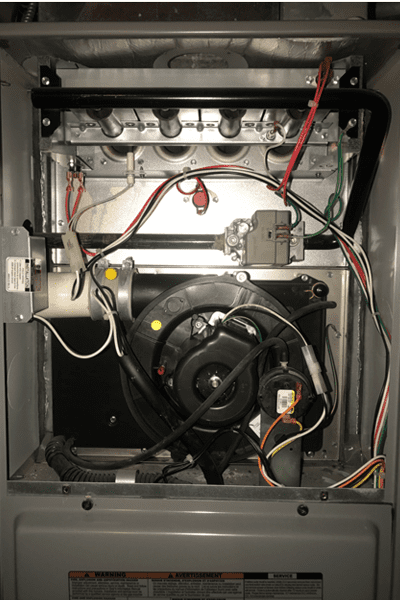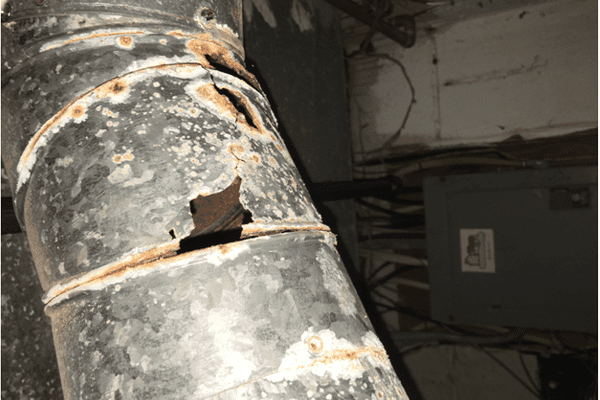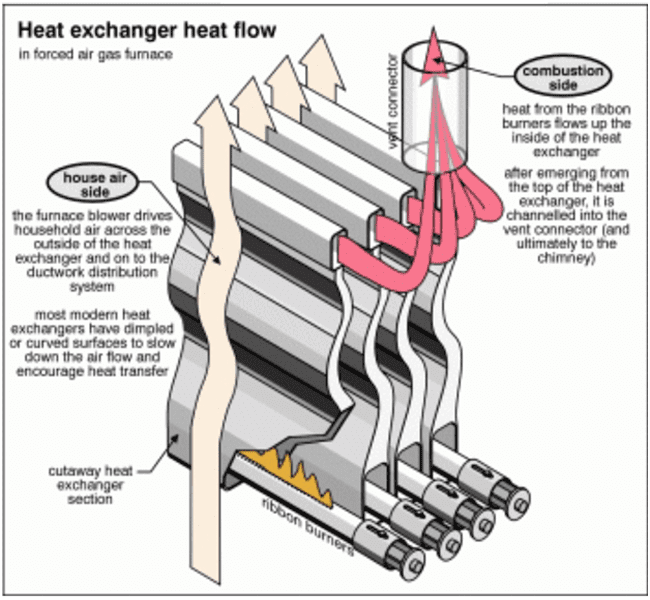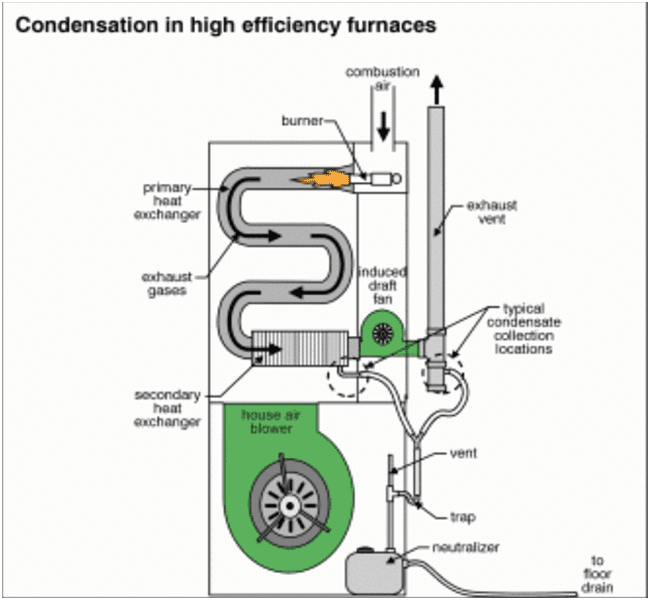FURNACE INSPECTION
Furnace Inspection Service
For every home in Columbus, Ohio, the furnace is a vital component that keeps your family warm throughout the long winter months. This is exactly why it is essential to partner with a skilled and trusted home inspector who can provide insight on potential problems and identify where in the operation sequence any malfunction may be occurring.
For the average homeowner, even just a quick look at your home’s furnace can leave you feeling overwhelmed. Modern furnaces rely on new technology that can seem complicated. Home & Commercial Inspections LLC can help you navigate the process of learning more about your furnace and to what extent it will operate efficiently in your potential new home.
At Home & Commercial Inspections LLC of Columbus, Ohio, we use our years of experience to examine your furnace, diagnose potential problems, and provide you with an accurate overview of its maintenance and life expectancy.
In order to help you become a better-informed homeowner and consumer, we have put together a guide to furnaces that covers common problems. While you will want to hire an expert for an official diagnosis and repair process, this information will provide you with some valuable insights into how your furnace works.

Sequence of Operation
While there are quite a few different types of furnaces that are manufactured by companies from around the country, every furnace is ruled by a basic sequence of operations.
The thermostat reaches a set temperature and sends a signal for the furnace to come on.
The inducer motor begins to spin a small fan that creates a draft. As air is pulled into the furnace, leftover gasses are expelled out through the vent pipe. This process makes sure that any remaining carbon monoxide is removed before the furnace actually begins pumping warm air into your home.
A sensor measures the pressure inside the inducer to determine whether a vacuum was successfully created by the inducer fan motor. If the sensor finds that enough air has been expelled, a switch will close the vent and begin providing the burners with enough oxygen to efficiently produce heat. If the pressure reading indicates that there isn’t a vacuum, the switch is left open, and the burners won’t ignite.
An ignitor kicks on. Depending on your furnace, you will have a hot surface or spark ignitor that ignites a flame each time the sequence of operation begins. Many furnaces come with a pilot light that is always on.
With surface and spark ignitors, a flame sensor will attempt to detect the flame source. If there is a functional flame source, the furnace will supply gas and begin generating heat. However, if no flame is found, no gas will be pumped into the furnace. This prevents the build-up of gas, which can be dangerous and deadly.
Once the air has been heated, the blower motor starts and blows air through the vents. How quickly your motor begins to send air through the home depends on the type of furnace you have. Different models offer different delay times.
The furnace will continue to blow warm air and heat the home until the thermostat detects that the interior has reached the desired temperature. At this point, a signal will be sent to the furnace to turn it off.

Understanding the Furnace Sequence of Operation
Whether you have a gas, oil, propane, electric, heat pump, or geothermal furnace, it is important that your home inspector has a clear understanding of the sequence of operation. Knowing exactly how and when each component works will allow the home inspector to pinpoint problems to provide more detail to the HVAC technician to replace specific components, saving time and money.
Common Furnace Flue and Cabinet Rust Issues
As dangerous gases are expelled out of chimneys or vent pipes, there is the potential for water vapor to cause condensation in the pipes and eventually lead to rust and corrosion. It is normal for these gases to include a certain amount of water; however, when your furnace is working properly, any existing water vapor is well out of the pipes before it has the chance to cool and turn into condensation.
When there are problems with your HVAC system, the vapor can cool and turn into water, which can simply settle into your pipes and ductwork. As any homeowner knows, moisture can be one of your home’s biggest foes. If water is forming, there are several areas that should be investigated and adjusted to create ideal conditions for water vapor to safely exit the pipes.
Flue Size
Bigger isn’t always better. If your flue is too large for your heating system, it will allow too much air to circulate. This works against the pipe’s ability to create a strong enough updraft to send gases and vapors up and out of the chimney. It also has the potential to let cold air into the chimney, where it will trap and cool the warm air that needs to escape. If the wrong size flue is the cause of your rusting system, our experts at Home & Commercial Inspections LLC will be able to quickly identify the problem and make recommendations for an appropriate resolution.
Melding the Old and the New
While you might assume that a new furnace is a good thing, you can run into condensation problems if you try to hook a new unit up to an old flue. Older furnaces were less efficient, which meant that a lot of hot air escaped up and out through the flue. This might not have been great for heating the home or keeping utility bills down, but it did mean that the flue stayed warmer and prevented condensation from forming.
When a new and more efficient furnace is connected to an older flue, there is an increased risk of condensation. As more heat is sent directly into the home, the flue tends to cool faster. It may be necessary to also replace your old flue in order to ensure that your entire system is working properly after the upgrade.
Why Should I be Worried about Condensation
Water vapor and condensation that collects in your flue and vent pipes aren’t inherently dangerous, but they can cause hazardous conditions. Condensation will lead to rust, corrosion, and leaks. Carbon monoxide is one of the main gases that is produced by your furnace and needs to be safely removed through the flue. It is an odorless and colorless gas that can seep through cracks in your flue and enter the home. The symptoms of carbon monoxide poisoning often resemble the flu, so people tend to dismiss their feelings of dizziness and nausea. This can ultimately be a deadly mistake.
All homeowners should equip their homes with carbon monoxide detectors, but it is also important to rely on the expertise of home inspectors who can conduct regular furnace checks. Furnace maintenance will allow you to detect condensation before it has the chance to cause damage and create dangerous conditions. At Home & Commercial Inspections LLC, we help Columbus, Ohio area residents protect their homes and their families by providing unbeatable services that are backed by years of experience.
Cracked Heat Exchanger

Another main component of your furnace that has the potential to become damaged and cause health problems is the heat exchanger. This vital piece of metal works to separate the heated air that is meant for the house from the combustion air that is created as a by-product during the heating process and includes some dangerous gasses. If this airtight barrier becomes cracked or damaged, air from the combustion side of the heater can infiltrate the house air, which can be harmful to you and your family.
During a home and furnace inspection, an inspector will perform a carbon monoxide supply air test and a combustion analysis that examines the flue by-products. This will provide the right information to determine whether your heat exchanger has become cracked, which could potentially be a large expense. Having your furnace inspected goes beyond simply improving efficiency and reducing heating bills and is an important step you can take to protect your family from dangerous gasses.

Leak Condensation Problem
There are many problems that could cause a condensation leak inside or outside a furnace cabinet. The inducer fan gasket, coil gasket, condensation line, humidifier, and evaporator coil are common culprits. Sometimes these parts malfunction, but they are also susceptible to normal wear and tear and may need to be periodically replaced over the life of your furnace.
The interior furnace cabinet includes an inducer fan gasket and heat exchanger coil gasket that can become brittle over time. The coil, which is located at the bottom of the heat exchanger, and the inducer fan, which moves the combustion waste products to the exterior, both rely on gaskets that also have the potential to leak condensation.
Here are some other common situations that can lead to leaks and condensation:
High-efficiency units that have a AFUE rating of 90 or above are designed to produce exhaust that comes in a cool liquid form. Typically, this condensation is systematically removed from your home through a drain in the floor.
However, a leak or crack in the drain pipe can allow liquid to pool on the floor around your furnace. If you notice moisture building up in this way, it is time to call Home & Commercial Inspections LLC of Columbus, Ohio.
Furnace humidifiers are meant to add moisture to dry air that tends to occur during the winter months and causes a variety of uncomfortable symptoms. A humidifier uses tap water to add moisture to the air and is connected to your home’s plumbing system. Any crack or leak in this component of the furnace can also lead to the accumulation of moisture, which could cause puddles to form on the ground around the furnace.
During spring and fall, residents of Columbus, Ohio, sometimes end up using both their furnaces and air conditioners to deal with temperatures that can change quickly. If you notice that water has gathered around your furnace and you recently used the air conditioner, the problem may be that the AC condensation pan has overflowed. When this occurs, it can be easy to assume that the water is coming from the furnace, but the air conditioner may actually be the offender.
Call on the Home Inspection Experts
Whether you’re a buyer or a seller in need of a property inspection, you want the peace of mind in knowing you are working with the most skilled and experienced inspectors in Ohio. At Home & Commercial Inspections LLC, we have years of technical HVAC background experience, so we understand your property’s mechanical components. Make us your first call for all your furnace and inspection needs, and enjoy the best in professional service and affordable pricing.
